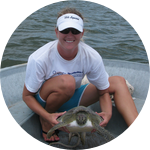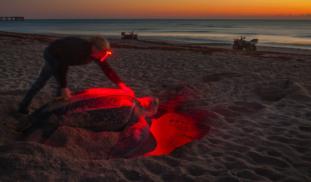Please wait...
About This Project
Leatherback sea turtles (Dermochelys coriacea) are the largest species of sea turtle, often reaching over 900 kg. The goal of our study, conducted along the beaches of southern Florida is to understand the size of the leatherback population, individual size, migratory patterns, family lineages, and other important aspects of leatherback biology. Studies like ours are critical to help protect this endangered species from the threat of extinction.
More Lab Notes From This Project

Browse Other Projects on Experiment
Related Projects
How do polar bears stay healthy on the world's worst diet?
Polar bears survive almost entirely on seal fat. Yet unlike humans who eat high-fat diets, polar bears never...
Uncovering hidden insect diversity associated with a likely undescribed gall-forming midge
Does a likely undescribed species of gall-forming midge (pers. comm. Ray Gagné) on Eriodictyon plants (Yerba...
Macrofungi of the California archipelago
The eight islands of the California Archipelago are a well-studied biodiversity hotspot — but we know almost...


